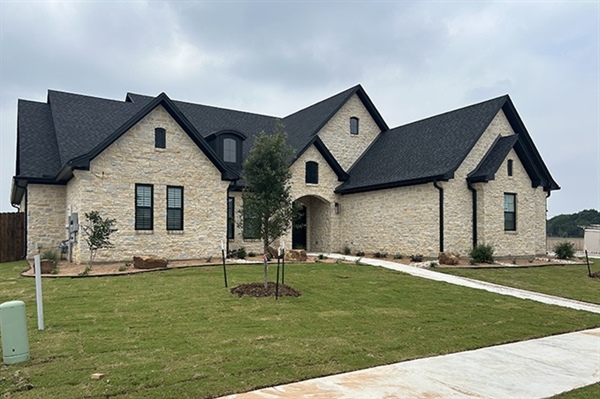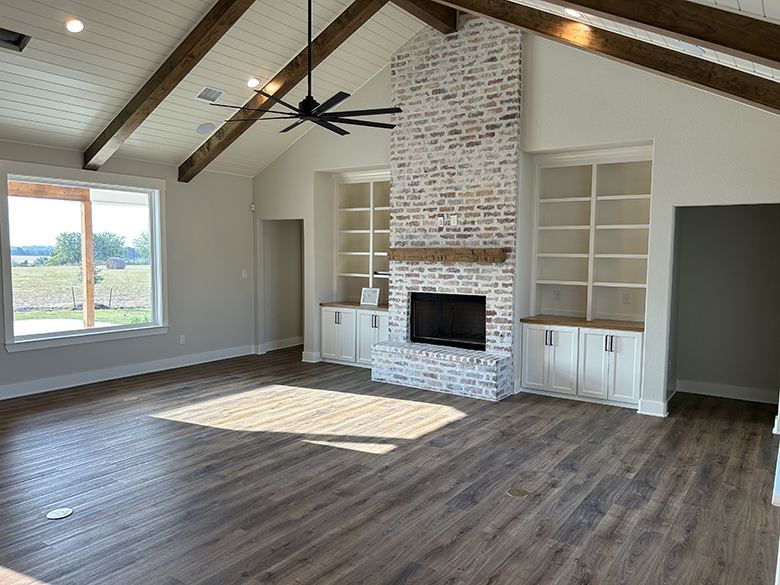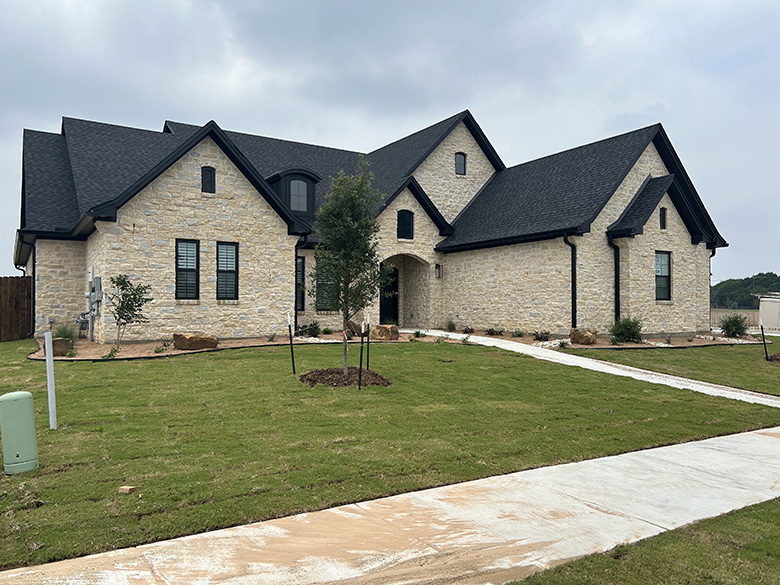From City to Countryside: Explore Location Options for Your Waco Custom Home

Building a custom home in Waco offers many exciting possibilities, but one crucial decision is WHERE to build.
Jim Bland Construction has helped Texas families build custom homes for over 50 years, so we understand your need to find the best location for a new house. Even when buying a home in the Lone Star State, the location you choose can significantly impact your lifestyle, the design of your home, your budget, and the overall building process.
To assist you in this decision-making process, we’ve compiled this guide, which explores…
-
The pros & cons of suburban vs. rural living
-
How land selection influences your project
-
Important infrastructure + regulatory considerations in the Waco area
Rural Areas vs. Suburbs
Some people know right away whether they want to live in the suburbs of Waco or a more rural area with extra land. However, if you’re struggling to decide, we've got you!
Pros & Cons of Building in Waco Suburbs
Waco has many popular suburbs, such as Woodway, Hewitt, Robinson, and China Spring (to name a few), each with its own charm and unique personality. Building in the suburbs has some benefits and drawbacks, so your decision will come down to any dealbreakers you have.
Pros:
-
The infrastructure is already established, making it easier and less expensive to access city services such as sewer, water, electricity, and high-speed internet.
-
The suburbs are closer to amenities such as schools, shopping centers, restaurants, hospitals, entertainment, etc.
-
There are established communities with neighborhood associations, parks, and community events.
-
Obtaining necessary permits may be easier due to standard building practices.
-
Homes in desirable suburban areas often have higher resale value.
-
Many suburbs in Waco have access to public transportation.

Cons:
-
Land costs tend to be higher.
-
The lot sizes are smaller and may be more restrictive in terms of building footprint and design freedom.
-
The zoning and building codes may be more stringent, with regulations on setbacks, building height, materials, and architectural styles.
-
There can be less privacy in neighborhoods and suburban areas.
-
While HOAs have benefits, they can also impose rules on landscaping, exterior colors, and other aspects of your property.
Pros & Cons of Building in Waco Rural Areas
Suppose you want to build a custom home in a rural area around Waco, such as Crawford, McGregor, or Valley Mills. In that case, you’ll have more freedom, but other potential benefits and drawbacks exist.
Pros:
-
Land prices are generally more affordable, allowing for more acreage.
-
You can have greater privacy and space for outdoor activities, gardens, and potential outbuildings.
-
There are fewer restrictions on building size, style, and materials.
-
You can enjoy a quieter, more natural environment.
-
Rural areas have the potential for unique features, including private wells, septic systems, and renewable energy sources.

Cons:
-
Rural areas pose more infrastructural challenges, such as access to water, sewer, electric, and high-speed internet.
-
Additional well digging, septic installation, and running power lines may be required.
-
Internet connectivity may be unreliable or unavailable in some rural areas.
-
There may be longer drives to schools, shopping, healthcare, and other necessities.
-
Permitting may be more complex and less straightforward.
-
Response time for emergency services may be longer.
-
The resale value of rural homes can be variable.
How Land Selection Impacts Home Design & Budget
The characteristics of your chosen land, whether rural or suburban, will directly influence your custom home design and overall budget.
Topography
The topography of the land can affect your budget and home design. Featured such as sloped land and flat land have pros and cons.
Sloped land can offer stunning views but may require specialized foundation design, such as walk-out basements or pier-and-beam foundations. It can also increase excavation costs and may pose challenges with landscaping and drainage.
Flat land, on the other hand, is generally easier and less expensive to build on but may require extra attention to drainage.
Soil Conditions
The type of soil, such as clay or sandy loam, affects foundation requirements and costs. Soil testing is crucial for determining stability and identifying the need for soil amendments.
Tree Cover & Vegetation
Existing trees can provide shade and beauty while also reducing your home's cooling costs. On the other hand, removing or working around too many trees may be necessary, which can impact site preparation costs and design.
Water Features (Ponds, Creeks)
Water features around your home can be attractive, but they may come with zoning restrictions, flood zone considerations, and specific building setback requirements.
Sun Orientation
Considering the sun’s orientation and the angle of your home is important. Analyze how the sun will track across your property to optimize natural light and energy efficiency in your home design.
Easements & Setbacks
Existing easements for utilities or access will restrict where you can build. Zoning regulations dictate minimum setbacks from property lines.

Permits + Zoning Considerations in Waco & Surrounding Areas
Navigating permits and zoning is a crucial step during the custom home-building process. While your home builder, like Jim Bland Construction, will help navigate the complexities of this process, you should still be aware of the requirements.
Requirements vary between the City of Waco and the surrounding counties. For example, in the City of Waco, building permits are required for all new construction. You will also have to pay attention to zoning ordinances that dictate land use, building setbacks, height restrictions, lot coverage, and architectural guidelines within the city limits. Additionally, be prepared for multiple building inspections throughout the construction process.
Conversely, in rural counties, building permits are required by the county, but regulations and enforcement may differ from the City of Waco. Zoning regulations will vary from county to county, and some may be less stringent than others. This does not mean you are exempt from all restrictions, however.
Invest in Your Future: A Custom Home by Jim Bland Construction
By carefully weighing the pros and cons of suburban vs. rural living and understanding how that choice will impact your custom home-building experience, you can make the best choice for your family and budget. Working with experienced local professionals, such as those at Jim Bland Construction, can make the entire process much smoother and less stressful.
As a locally owned company, Jim Bland Construction has experience working with both rural and urban development offices on permitting and zoning ordinances. We can help you navigate the complexities of building a custom home in and around Waco, Texas.
Let us show you the amazing home you can build using our experience, custom design solutions, and prime locations! Request more information online or call us at 254-772-6508 to speak with one of our experienced home builders.